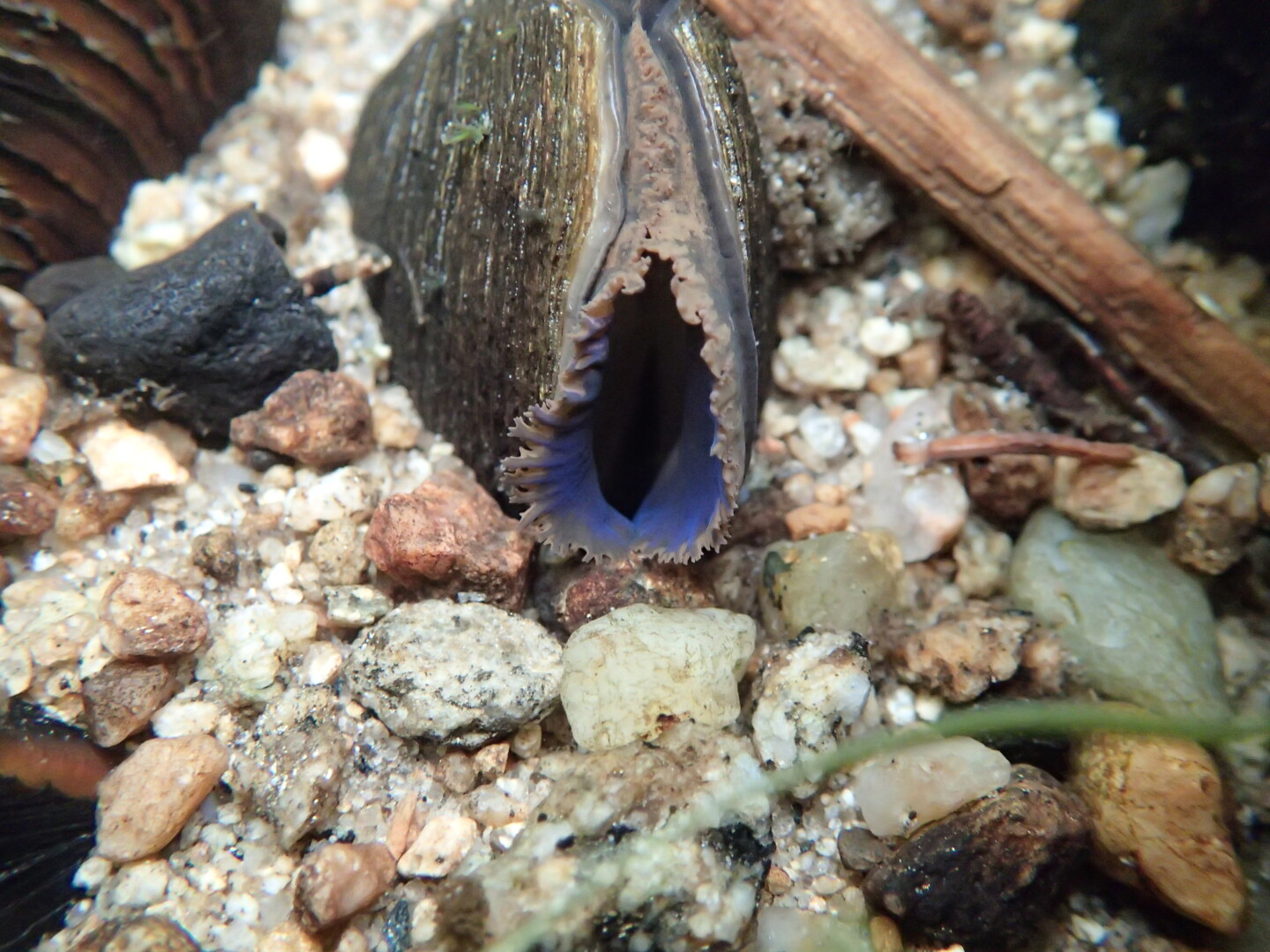Freshwater pearl mussel, Margaritifera margaritifera (later FPM) is the longest living species in the fauna in Kolarctic region. It can attain an age of at least 150 years and in some cases over 250 years.
The Freshwater pearl mussel is an ecologically many-sides species. Abundant number of FPM contributes to its surroundings. It inhales water through exposed siphons, and filters out tiny organic particles on which it feeds. This way it clarifies the water. In addition, they act as an attachment surface for many other organisms and cause beneficial bioturbation when burrowing in the river bottom.
WWF and project SALMUS have published the time-lapse video above, of their Freshwater Pearl Mussel live cam in summer 2020.
The start of a life
A freshwater pearl mussel begins life as a tiny larva, measuring just 0.6 to 0.7 millimetres long, which is ejected into the water from an adult mussel in a mass of one to four million other larvae. The chances of a larva encountering a suitable fish are very low, and thus nearly all are swept away and die; only a few are inhaled by an Atlantic salmon or sea trout, where they snap shut onto the fish’s gills.
Attached to the gills of a fish, the glochidia live and grow in this oxygen-rich environment until the following May or June, when they drop off. If lucky, the juvenile lands on clean gravely or sandy surface and continues growing.
Ecosystem service provider
It is thought that in areas where this species was once abundant, the filtering type of feeding of the FPM acted to clarify the water, benefiting other species that inhabited the rivers and streams.
FPM is an indicator of the state of the river ecosystem. A vital FPM population with stable recruitment of young mussels always indicates clean water and a healthy ecosystem. On the other hand, a population of only old mussels indicates that negative changes have taken place in the environment.
Most FPM populations in Southern and Central Europe have already become extinct, but even in Northern Europe major part of the populations is nowadays estimated to be non-functional, i.e. individuals reproduce only occasionally or – more often – not at all.
Endangered species
In European Union, FPM is listed on the IUCN Red List of Threatened Species as an endangered taxon (EN). It is also listed in Annex II of the EU´s Habitats Directive. In addition, it is nationally protected in Finland, Russia, Norway and Sweden.
The protection of FPM and its salmonid hosts goes always hand-in-hand. Especially the land-locked forms of the Atlantic salmon are critically endangered.
Cooperation in mapping, detecting and assessment

Heikki Erkinaro is helping Aune Veersalu prepare for a dive in river Luttojoki
In project SALMUS (Salmonid Fish and Freshwater Pearl Mussel- Riverine Ecosystem Services and Biodiversity in the Greenbelt of Fennoscandia) the partner organisations from four countries enhance the protection of the FPM. They do this by mapping the FPM communities, developing the protection methods and pointing out the importance of the wellbeing of watercourses.
The project SALMUS focuses on salmon and freshwater pearl mussel because Atlantic salmon and brown trout are the host species for the larvae of FPM and thus an indispensable part of its life cycle.
At present, the only remaining large and regularly reproducing FPM populations can be found from Fennoscandia and North-West Russia. Therefore, cross-border cooperation in this area is of great importance for the conservation of the species.
Besides research of the living conditions and state of the FPM populations already known, the project is mapping FPM populations that are so far unknown. This is a demanding task, as the project works on hundreds of kilometres of watercourses on Kolarctic CBC area. For this purpose, the project will use two novel techniques: 1. Electrofishing of the FPM host fish and inspecting the FPM larvae in their gills and 2. Detecting eDNA (environmental DNA) from the water samples taken from the target rivers.
When those methods have given positive signals about the presence of FPM, the mussel communities can be finally found ”In Real Life” by diving or using an aquascope.

An ideal freshwater pearl mussel population consisting of different age groups
Project: Salmonid Fish and Freshwater Pearl Mussel– Riverine Ecosystem Services and Biodiversity in the Green Belt of Fennoscandia (SALMUS)
Lead partner: Metsähallitus, Parks and Wildlife Finland, Vantaa, Finland
Other partners:
- Alleco Oy, Helsinki
- University of Jyväskylä, Jyväskylä
- County Administrative Board of Norrbotten, Luleå
- Natural Resources Institute Finland, Oulu
- Norwegian Institute for Bioeconomy Research NIBIO, Svanvik
- Karelian Research Institute of the Russian Academy of Science
- Institute of Industrial Ecology Problems of the North of the Kola Science Center of Russian Academy of Science (INEP KSC RAS)

A freshwater pearl mussel individual with siphons filtering bypassing water. Photo: Aune Veersaly / project SALMUS
